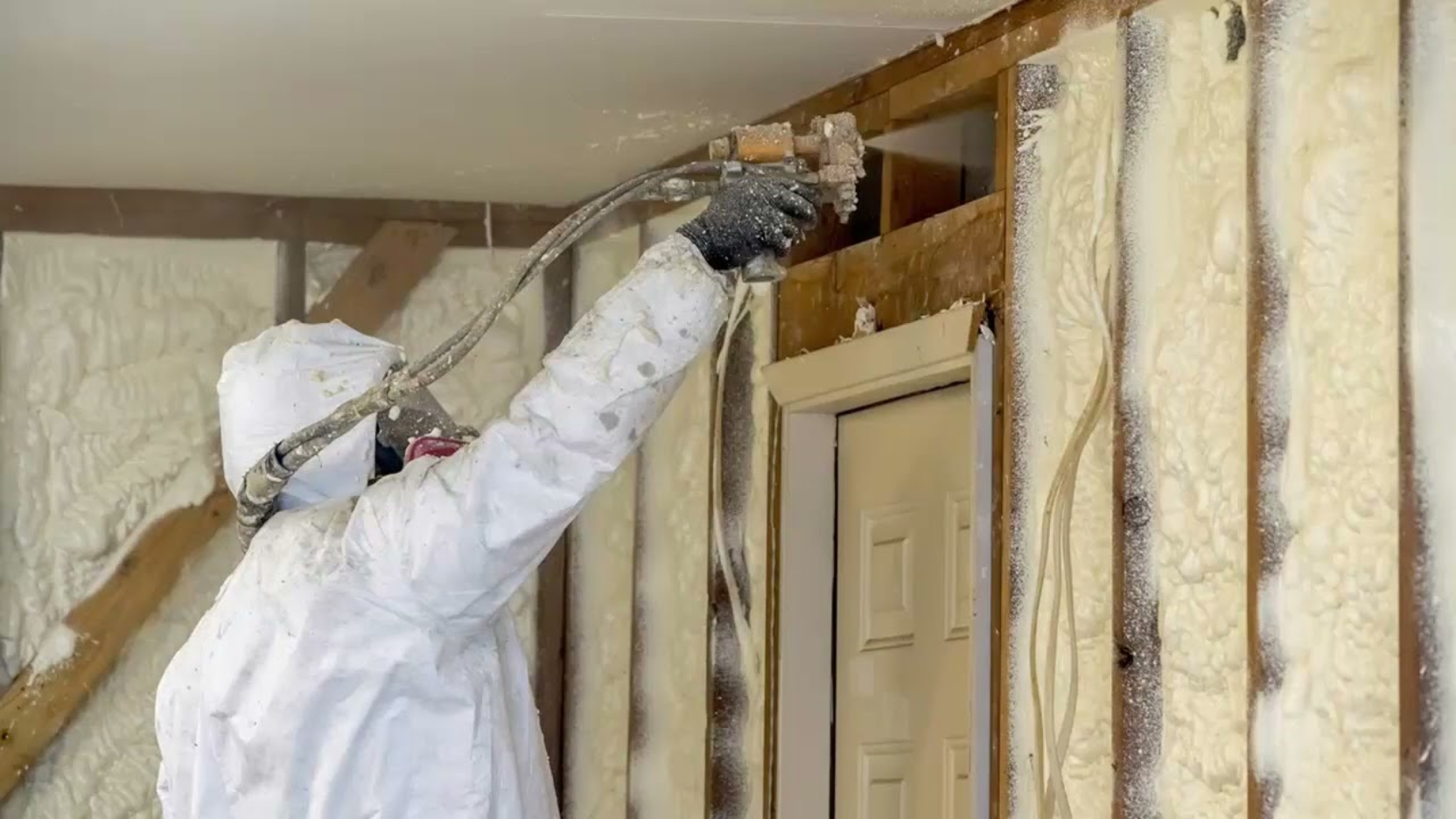Understanding the Compatibility of Spray Foam and Fiberglass
Spray foam insulation is widely known for its energy efficiency and air-sealing properties. Many homeowners and contractors wonder if it can be applied over existing fiberglass insulation instead of removing it entirely. This approach could save time and labor, but is it effective?
How Spray Foam and Fiberglass Differ
Before deciding whether to apply spray foam over fiberglass, it’s important to understand how the two materials function.
- Fiberglass Insulation: Made of fine glass fibers, it slows heat transfer but does not create an air seal. It is prone to gaps and settling over time.
- Spray Foam Insulation: Expands to fill gaps, providing both insulation and an air barrier. It significantly reduces heat loss and moisture issues.
Can Spray Foam Be Applied Over Fiberglass?
Key Considerations Before Application
Applying spray foam over fiberglass can sometimes work, but there are several factors to consider:
- Condition of the Fiberglass: If the existing fiberglass is compressed, wet, or moldy, it should be removed before applying spray foam.
- Air Gaps and Coverage: Spray foam needs direct contact with surfaces to create an effective air seal. Gaps in the fiberglass can prevent proper adhesion.
- Weight and Compression: Some fiberglass insulation may shift or compress when spray foam is applied, reducing effectiveness.
- Moisture Issues: Fiberglass can trap moisture, which could become a problem if sealed under spray foam without proper ventilation.
Best Practices for Installing Spray Foam Over Fiberglass
If applying spray foam over fiberglass, following best practices ensures better results:
- Inspect and Clean the Existing Fiberglass: Remove any damp, moldy, or compressed insulation before proceeding.
- Choose the Right Type of Spray Foam: Closed-cell foam works better over existing materials because it adds structural support and moisture resistance.
- Apply a Thin Layer First: A light coat of spray foam can help stabilize the fiberglass before additional layers are added.
- Monitor for Shrinkage or Movement: Ensure that the fiberglass remains in place as the foam expands.
- Use a Professional Installation Service: A trained installer will know how to handle challenges like uneven surfaces or airflow concerns.
Alternative Approaches
If fiberglass is in poor condition, completely removing it before applying spray foam is often the best choice. This allows for better insulation performance and reduces the risk of hidden moisture problems.
Improving Energy Efficiency with Proper Insulation
When insulation is installed correctly, it helps reduce energy costs and improves indoor comfort. Spray foam provides:
- Better Air Sealing: Reduces drafts and heat loss.
- Higher R-Value: More effective than traditional fiberglass insulation.
- Moisture Control: Limits condensation issues that can lead to mold.
For professional guidance on insulation solutions, contact Nevada Urethane at (775) 500-0024 or email [email protected].
FAQs
1. Can you install closed-cell spray foam over fiberglass?
Yes, but the fiberglass must be in good condition, and the spray foam must make direct contact with the surface to be effective.
2. Is it necessary to remove old fiberglass before applying spray foam?
Not always. If the fiberglass is clean, dry, and in good shape, it may remain in place. However, removal is recommended for better insulation performance.
3. Will spray foam compress the existing fiberglass?
Yes, it can, especially if applied in thick layers. This may reduce the effectiveness of both materials.
4. Can spray foam trap moisture inside fiberglass insulation?
Yes, especially if the fiberglass is already damp. This can lead to mold growth and should be avoided.
5. Which type of spray foam works best over fiberglass?
Closed-cell spray foam is preferable because it provides structural support and a vapor barrier.
6. Will adding spray foam over fiberglass improve energy efficiency?
Yes, spray foam can increase insulation effectiveness by sealing air gaps and providing a higher R-value.
7. Is it possible to DIY spray foam installation over fiberglass?
It’s not recommended. Professional application ensures correct thickness, adhesion, and safety precautions.
8. How much does it cost to install spray foam over fiberglass?
Costs vary depending on the area, type of foam, and labor. Contact a professional for an estimate.
9. Can spray foam be applied in attic spaces with existing fiberglass?
Yes, but proper ventilation and assessment of the existing insulation are necessary to prevent moisture issues.
10. What are the risks of applying spray foam over fiberglass incorrectly?
If not done properly, it can lead to air pockets, moisture buildup, and reduced insulation efficiency.
